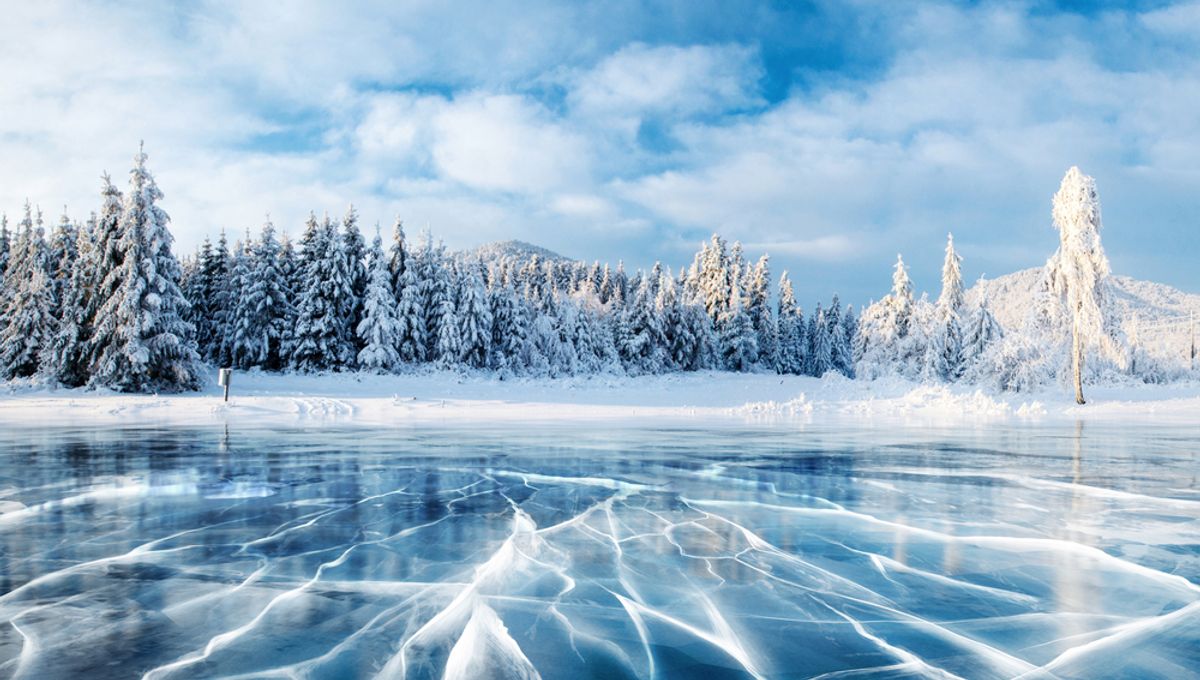
When water gets very cold, the molecules can group together into larger structures while still remaining liquid. They can do this in two ways, leading to separate liquids with very different densities. New research has shed light on the shapes of these supermolecules and what each says about the nature of each liquid.
The idea of two liquid phases for water well below its freezing point was proposed over 30 years ago, but couldn’t be proven at the time. Two years ago, an immense amount of computer time enabled the modeling to back the idea up.
Nevertheless, details of how water arranges itself in these phases remained murky (unlike the water itself, which must be exceptionally pure to avoid freezing). Now, a new paper in Nature Physics provides some answers.
It’s astonishing how complex water is considering it’s made up of just two elements, and its molecules consist of just three atoms. The fact it’s denser in its liquid phase than solid, allowing ice to float, is so contradictory to most substances we’d struggle to believe it, were it not so familiar.
Things get even more involved when you cool water below the freezing point without it actually freezing. The fact this can be done (if there are no impurities in the water or roughness to its container) makes for great demonstration videos, but what really goes on within “supercooled water” on a molecular level as temperatures cool further is poorly understood.
Scientists have observed that supercooled water can form high- and low-density liquid phases. These are different from the heavy water produced when deuterium atoms replace some of the ordinary hydrogen in water. The composition of the water is the same, with the density dependent on how the molecules arrange themselves.
According to the paper, the high-density form of supercooled water can see molecules entangle themselves like a pretzel (technically a trefoil knot) or the linked rings beloved by amateur magicians (Hopf link).
“The system is able to simultaneously minimize its volume and maximize the number of bonds in the network by forming knots and links,” the paper notes. Meanwhile, as previously suspected, the low-density liquid phase involves unentangled rings of water molecules, with the space in the middle contributing to how light this phase can be.
“This insight has provided us with a completely fresh take on what is now a 30-year-old research problem, and will hopefully be just the beginning,” University of Birmingham PhD student Andreas Neophytou said in a statement.
Sadly, we are still a long way from observing the water molecules in an actual experiment, so the results still come from computer modeling to replicate measurements such as the density under specific temperatures and pressures. To make the calculations manageable, the authors used the fact that water self-assembles into colloids, particles composed of thousands of water molecules at these temperatures. The slower movements of these colloids makes them easier to model than individual molecules, which even at sub-zero temperatures move around so rapidly they’re hard to track.
“This colloidal model of water provides a magnifying glass into molecular water, and enables us to unravel the secrets of water concerning the tale of two liquids,” Dr Dwaipayan Chakrabarti of the University of Birmingham said.
“Water, one after the other, reveals its secrets! Dream how beautiful it would be if we could look inside the liquid and observe the dancing of the water molecules, the way they flicker, and the way they exchange partners, restructuring the hydrogen bond network. The realization of the colloidal model for water we propose can make this dream come true,” said Sapienza Università di Roma’s Professor Francesco Sciortino, one of the authors of the original paper predicting the two phases.
Source Link: Water Becomes Two Liquids When Supercooled, And We’re Starting To Learn Their Natures